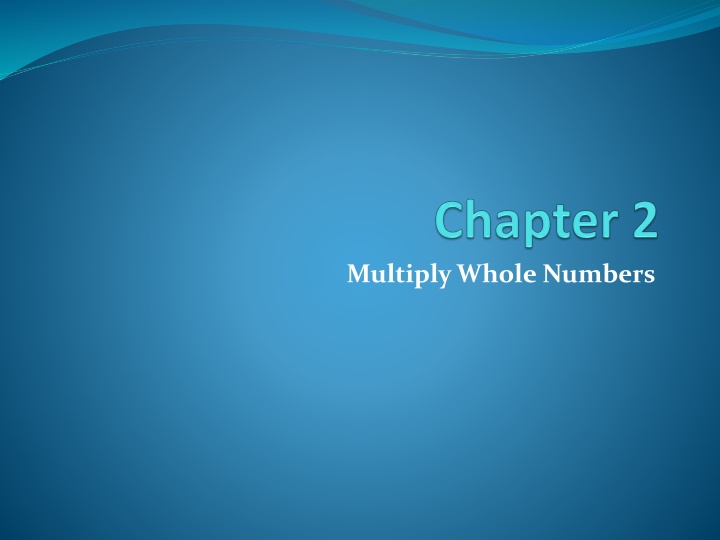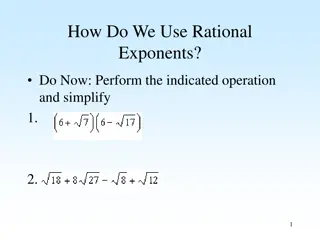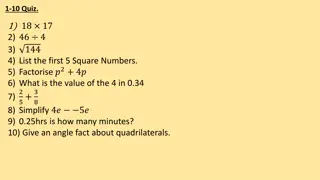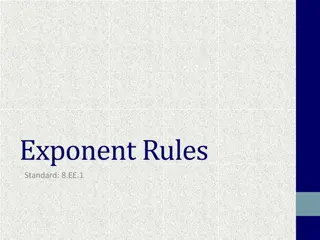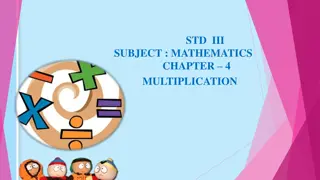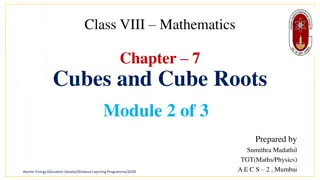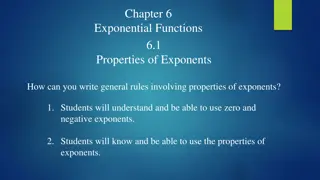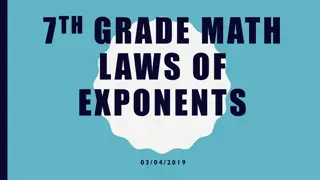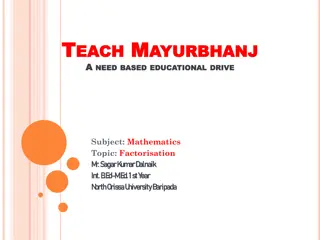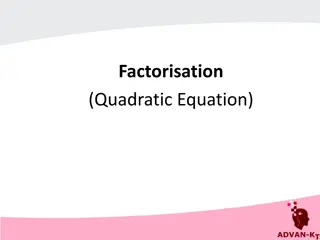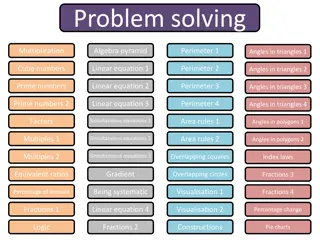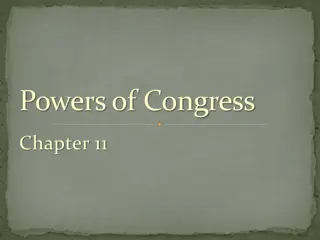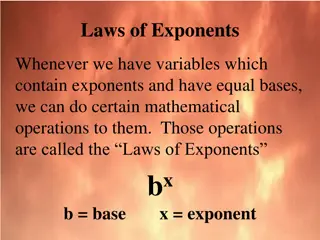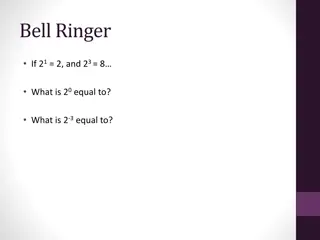Essential Math Concepts: Prime Factorization, Powers, Exponents, and Multiplication Strategies
Learn fundamental math concepts such as prime factorization, powers, exponents, multiplication patterns, and problem-solving strategies with examples and visuals. Explore topics like the distributive property, estimating products, and multiplying by one-digit numbers in an engaging manner.
Download Presentation

Please find below an Image/Link to download the presentation.
The content on the website is provided AS IS for your information and personal use only. It may not be sold, licensed, or shared on other websites without obtaining consent from the author.If you encounter any issues during the download, it is possible that the publisher has removed the file from their server.
You are allowed to download the files provided on this website for personal or commercial use, subject to the condition that they are used lawfully. All files are the property of their respective owners.
The content on the website is provided AS IS for your information and personal use only. It may not be sold, licensed, or shared on other websites without obtaining consent from the author.
E N D
Presentation Transcript
Lesson 1 Prime Factorization Prime factorization is breaking down a composite number into its prime factors. To find the prime factorization of a number, use a factor tree. Example: 18 3 x 2 x 3 The prime factorization of 18 is 2 x 3 x 3 ( 2 x 3 ). 6 x 3
Lesson 3 Powers and Exponents 3 3 is the base 4 is the exponent The base is the number that is being multiplied . The exponent tells you how many times you multiply the base. Example: 3 = 3 x 3 x 3 x 3 9 x 9 = 81
Lesson 4 Multiplication Patterns With powers of 10 and other large numbers, you can use mental math to solve. Example: 450 x 1,000 450 x 10 (the exponent tells you how many zeros to add) 1. Multiply the numbers that are not zeros . 450 x 1,000 45 x 1 = 45 2. Count the number of zeros in the product. Put that many zeros in your answer. 1 zero + 3 zeros = 4 zeros in answer 450 x 1,000 450 x 1,000 = 450,000
Lesson 5 Problem-Solving Strategy: Make a Table Janice is training for a marathon. She begins by running 2 miles the first week. Each week she runs double the amount of miles. How many miles will she run during week 4? Double = x 2 Week 1 2 3 4 Miles 2 4 8 16 starting # x 2 x 2 x 2 Janice will run 16 miles during week 4.
Lesson 7 The Distributive Property You can use the Distributive Property to break numbers into smaller ones that you can easily multiply. Example: 8 x 12 10 2 Break the digit down into tens and ones Multiply and add the sums. (8 x 10) + (8 x 2) 80 + 16 = 96
Lesson 8 Estimate Products 1. Round numbers all the way to the left. Use the rules for rounding . 92 900 1 2 3 4 - round down x 12 x 10 5 6 7 8 9 round up 2. Multiply the non-zero numbers. Count the zeros. x 10 90 9 x 1 = 9 1 zero + 1 zero = 2 zeros 900
Lesson 9 Multiply by One-Digit Numbers 1. Multiply the ones. 2. Multiply the tens. Bring the digit in the tens place over to the next number. 1 873 x 2 46 873 x 2 6 3. Multiply the hundreds. Add the number you carried over. 1,746 1 873 x 2
Lesson 10 Multiply by Two-Digit Numbers 1. Multiply the ones. 2. Erase any markings. Add a zero to the next row. 3. Multiply the tens. 56 4. Add the columns. x 17 4 56 392 x 17 392 + 560 952
